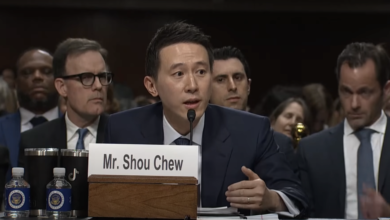Photo: A post office and distribution facility in Portland, Oregon. Credit: Wikimedia Commons
Between 2015-2023, the U.S. Postal Inspection Service inspected over 312,000 letters and packages, making notes on the sender and recipient of the parcel. The USPIS does this at the request of federal and state agencies including the FBI, Department of Homeland Security, the IRS and ICE. USPIS is a branch of the U.S. Postal Service.
The information was initially reported by The Washington Post, in response to a 2023 letter to the USPIS Chief Postal Inspector from Senator Ron Wyden and seven other Senators questioning the program.
Over 60,000 “mail cover” requests to USPIS were received in that time period, with 97% being approved. The requests are approved for an initial period of 30 days, which may be extended for up to 120 days. There is no external oversight over the approval process, and a judge does not need to approve the application or the request. While further details on the 2015-2023 period are not publicly available, a 2014 report from the USPS Office of the Inspector General notes that 21% of the requests it reviewed from 2013 “were approved without written authorization and 13 percent were not adequately justified or reasonable grounds were not transcribed accurately.” Further, the report “ found 928 mail covers in active status after the cover periods ended” — meaning that even after the approval period had expired, surveillance was allowed to continue.
History of mail surveillance
The method of mail cover surveillance has been part of postal service regulations since 1879. While they remain legal under U.S. law, in the 1978 case United States v. Choate, a judge on the U.S. Ninth Circuit Court of Appeals suggests that a mail cover is a search and seizure by the government. In her opinion, circuit judge Shirley Hufstedler wrote, “It is apparent that mail covers fall squarely within Supreme Court Fourth Amendment precedents which hold that the Amendment is implicated when the Government searches and seizes private objects and information, even though they are temporarily in public custody, or even in a public place.”
Hufstedler also remarked that “the mail cover used in combination with other techniques quickly makes the subject’s life an open book to investigators,” exposing the privacy dangers of mail covers being used to then gather information from a bank or other source, for example. This observation is even more applicable decades later in the digital age, when the national surveillance state is ingesting massive amounts of information on every email, text and phone call we send and every website we visit.
The information available from the outside of an envelope — who it is from, who it is addressed to, when and where it was mailed — does not give away the exact contents of the letter inside. Similar to the “To,” “From” and “Sent At” columns in an email inbox, this type of information is known as metadata, or data that provides information about other data. While the specifics of the letter or message are not revealed, intelligence and law enforcement agencies can still use this information to target individuals and groups.
‘We kill people based on metadata’
At a forum in 2014 at Johns Hopkins University, former CIA and NSA head Michael Hayden said, “We kill people based on metadata.” Hayden was responding to outrage at the NSA’s mass spying after Edward Snowden exposed PRISM, XKEYSCORE, Upstream and other surveillance programs, revealing that the agency partnered with private internet, social media and telecommunications companies to collect vast amounts of metadata and data on people across the world.
The mail cover program is not the only instance of the U.S. government wielding its massive surveillance powers on postal mail. The CIA’s HTLINGUAL program ran from 1952 until 1973, and was exposed by the 1975 Church Committee report in the Senate Select Committee on Intelligence as one of a massive number of surveillance and other intelligence abuse programs run by the CIA, FBI and NSA. Twenty eight million letters were examined — at CIA locations outside of the mail cover program — and over 200,000 pieces of mail were illegally opened. The program targeted anti-war and civil rights activists, academics, scientists, artists, writers and more, and those whose mail was read include Martin Luther King, Jr. and John Steinbeck. HTLINGUAL and the other surveillance programs of the time, were put in place to attack dissent during the Cold War and the Civil Rights and anti-war movements.
The national security state operates within the law when the law favors it, and outside the law when the law hinders it. The breadth and depth of its reach into our personal lives, from location data and text messages to physical mail, may seem an insurmountable challenge, but history shows us differently. An organized, principled struggle and movement against oppression in any of its forms — war and colonial occupation, racism and other forms of bigotry, economic injustice, and the deprivation of civil liberties — is capable of victory against even the most well-funded opponent in power.





